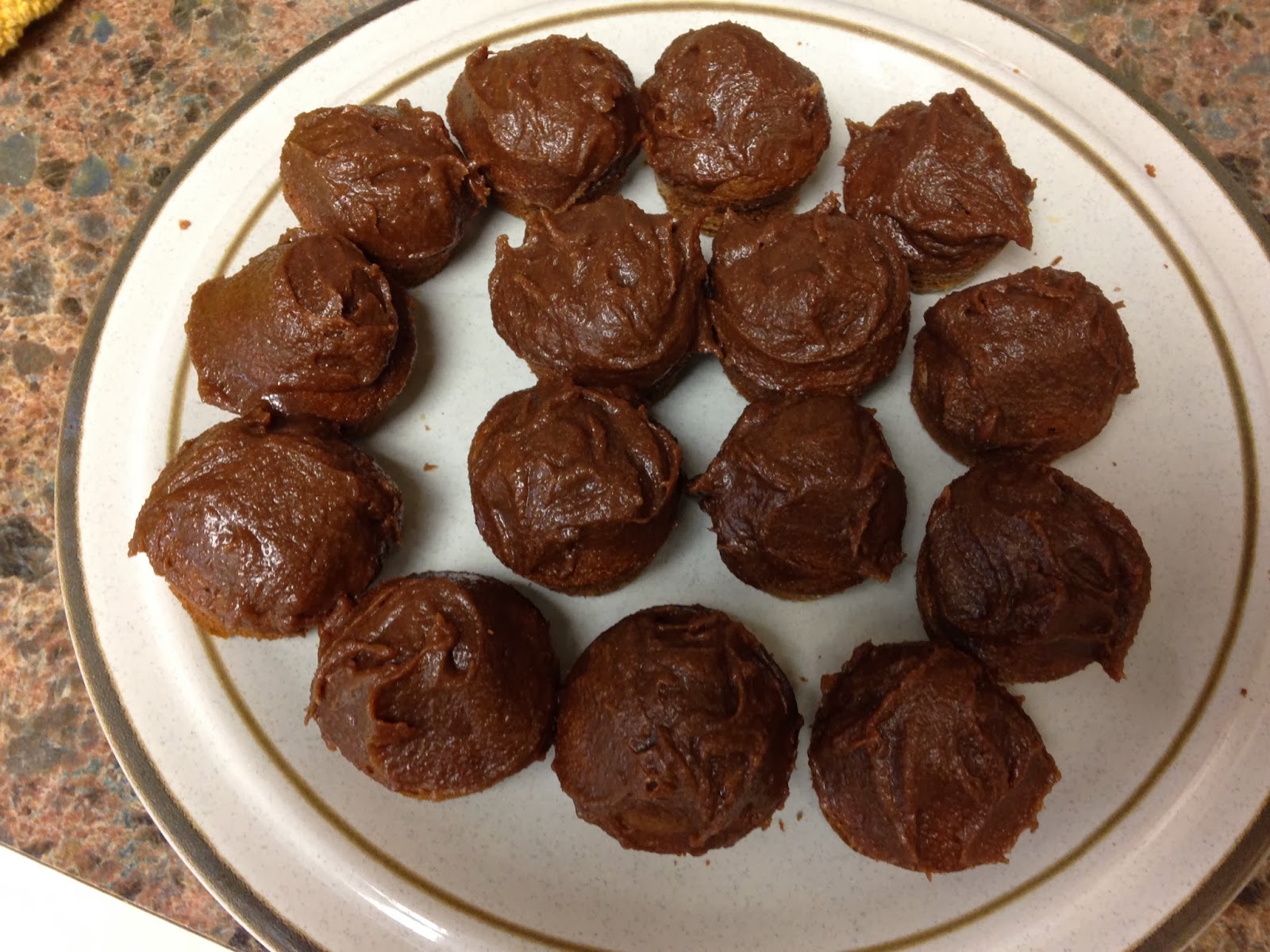
If just the sound of that title has you craving coffee or chocolate or cake, this post is right up your alley! That's right I made a Mocha Buttercream Chocolate Espresso Cake and mini Cupcakes!!!
Get ready! Deliciousness ahead!
Here's the recipe!
This moist espresso and chocolate flavored cake is brushed with coffee glaze and then finished with a soft mocha buttercream frosting, making every bite melt in your mouth.
Ingredients
 CHOCOLATE ESPRESSO CAKE
CHOCOLATE ESPRESSO CAKE1 bar (4 oz.) dark chocolate
2 cups all purpose flour
1 teaspoon baking soda
1/2 teaspoon salt
1 1/2 cups packed light brown sugar
1 cup (2 sticks) butter, softened
4 large eggs
2 tablespoons instant espresso powder or instant coffee granules
1 teaspoon vanilla extract
1 cup buttermilk
2 teaspoons instant espresso powder or instant coffee granules
3 tablespoons milk
1 cup (2 sticks) butter, softened
1/2 teaspoon vanilla extract
1/8 teaspoon salt
4 cups powdered sugar
Directions
 FOR CHOCOLATE ESPRESSO CAKE:
FOR CHOCOLATE ESPRESSO CAKE:PREHEAT oven to 350º F. Grease and line two 9-inch-round baking pans with wax paper.
MICROWAVE chocolate in small, uncovered, microwave-safe bowl on HIGH (100%) power for 45 seconds; STIR. If pieces retain some of their original shape, microwave at additional 10- to 15-second intervals, stirring just until melted. Cool to room temperature.
COMBINE flour, baking soda and salt in small bowl. Beat brown sugar, butter, eggs, instant coffee and vanilla extract in large mixer bowl for 3 minutes. Gradually add melted chocolate and continue beating for an additional minute. Beat flour mixture into creamed mixture alternately with buttermilk. Pour into prepared pans.
BAKE for 33 to 38 minutes or until wooden pick inserted in center comes out clean. Cool in pans on wire racks for 10 minutes. Run knife around edges of cakes. Invert onto wire racks; remove wax paper. Cool completely.
BRUSH Coffee Glaze over cake layers. Spread Mocha Buttercream Frosting between layers and over top and sides of cake.
 FOR MOCHA BUTTERCREAM FROSTING:
FOR MOCHA BUTTERCREAM FROSTING:MICROWAVE chocolate in small, uncovered, microwave-safe bowl on HIGH (100%) power for 45 seconds; STIR. If pieces retain some of their original shape, microwave at additional 10- to 15-second intervals, stirring just until melted. Cool to room temperature.
DISSOLVE instant coffee in milk in glass measure. Beat butter, vanilla extract and salt in large mixer bowl for 3 minutes. Beat in melted chocolate until blended, scraping occasionally. Gradually beat in powdered sugar until light and fluffy. Beat in coffee mixture, 1 tablespoon at a time, until desired spreading consistency.
 Instead of making a layered cake, I decided to just make a single layer cake and use the extra batter for mini cupcakes which you saw at the beginning of this post. I planned to bring the mini cupcakes into lab and share with everyone I do research with, but I put the plate in front of my housemates and they were all gone before I knew it. I brought the cake back to Bryn Mawr with me, my housemate decided she wanted to wrap it up and put a bow on it. I brought the cake to Bryn Mawr and it was all gone within a day of starting it. Next time I will use powdered sugar for the frosting (I didn't have any at SERC). Though there was just the right amount of coffee and chocolate.
Instead of making a layered cake, I decided to just make a single layer cake and use the extra batter for mini cupcakes which you saw at the beginning of this post. I planned to bring the mini cupcakes into lab and share with everyone I do research with, but I put the plate in front of my housemates and they were all gone before I knew it. I brought the cake back to Bryn Mawr with me, my housemate decided she wanted to wrap it up and put a bow on it. I brought the cake to Bryn Mawr and it was all gone within a day of starting it. Next time I will use powdered sugar for the frosting (I didn't have any at SERC). Though there was just the right amount of coffee and chocolate. 































